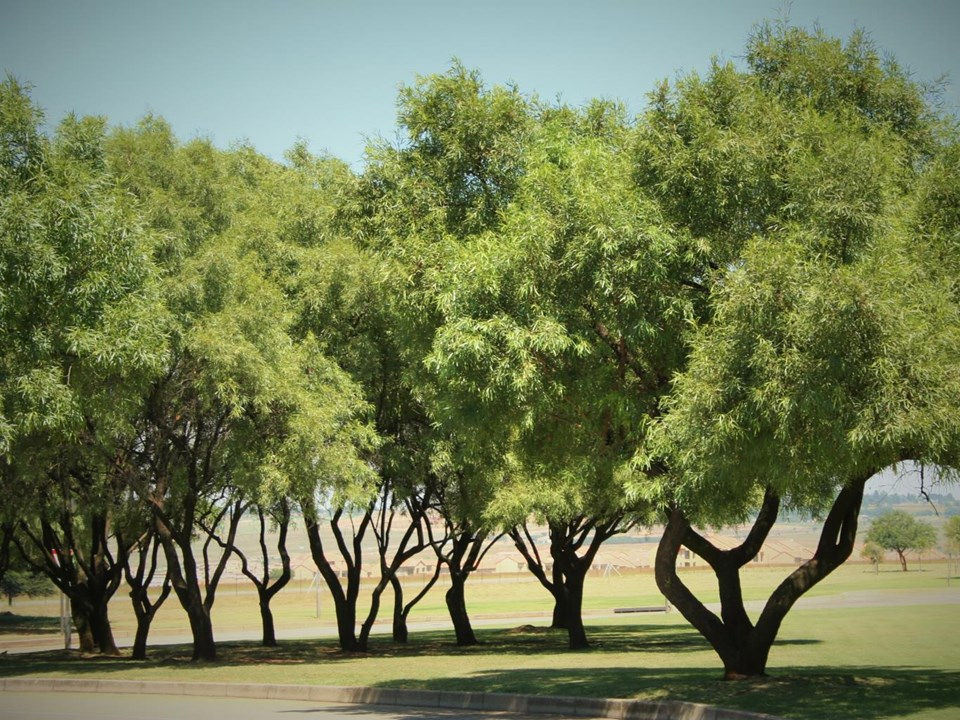Rhus Karee Tree (Searsia lancea): The Tough, Beautiful, Low-Maintenance Tree That Does It All
- Marne Truter
- Aug 28
- 4 min read
Updated: Sep 9
An indigenous favourite for property owners who want shade, structure, and zero stress.

What is the Rhus Karee Tree?
The Rhus Karee (Searsia lancea) is one of the most underrated indigenous powerhouses you can plant in the Western Cape.
It’s hardy.
It’s fast-growing.
It thrives in wind, drought, heat, and poor soil.
And once it’s in the ground, it’s almost maintenance-free.
From urban parks and school grounds to rural farms and lifestyle estates, the Rhus Karee is quietly doing a lot of heavy lifting, offering shade, biodiversity, erosion control, and wind buffering with almost no fuss.
Why We Recommend the Rhus Karee
If you want a resilient, reliable, indigenous tree with ecological value and practical benefits, the Rhus Karee is one of the smartest choices you can make.
Here’s why:
Drought-tolerant once established
Fast-growing (but not invasive in its native range)
Supports local birds, insects, and butterflies
Handles wind, poor soils, and exposed sites
Provides excellent privacy, screening, and shade
Requires minimal intervention once shaped correctly
At Overberg Arborists, we often recommend the Rhus Karee for clients who want a tree that will grow with them, not grow into a problem.
Rhus Karee Trees at a Glance
Feature | Detail |
Scientific name | Searsia lancea |
Common name | Rhus Karee |
Indigenous? | Yes – native to Southern Africa |
Height at maturity | 5–10 metres |
Canopy shape | Multi-stemmed, wide, slightly weeping |
Evergreen? | Yes (semi-deciduous in extreme drought/frost) |
Growth rate | Fast |
Wildlife value | High – birds, insects, biodiversity corridors |
Water needs | Low once established |
Root system | Wide-spreading — plant away from pipes & paving |
Ideal uses | Windbreaks, erosion control, screening, shade |

Where the Rhus Karee Thrives
The Rhus Karee is especially well-suited to Western Cape inland and semi-arid conditions, including:
Farms and smallholdings
Dryland gardens
Commercial properties needing “green structure”
Boundary planting on large plots
Wind-prone zones where other trees struggle
Soil? Doesn’t matter much. Sand, clay, gravel — as long as it drains, the Karee will thrive.
Sunlight? Full sun only. This isn’t a shade-lover.
Space? Give it room. This tree expands outwards — don’t plant it in tight beds or next to walls.
Why It’s More Than Just Tough
The Rhus Karee offers far more than just toughness. It’s a functional tree that solves problems:
Need | Rhus Karee Solution |
Erosion or slope control | Strong root structure stabilises soil |
Wind buffering | Wide, dense canopy deflects strong winds |
Wildlife support | Provides food and shelter for birds, insects, bees |
Privacy or screening | Grows quickly into an effective green barrier |
Drought-proof landscaping | Needs minimal irrigation once established |
It also tolerates pruning and shaping well — meaning you can train it into a beautiful small tree or let it sprawl into a living screen, depending on your vision.

Pruning and Maintenance Tips
Rhus Karees are low-maintenance
— but not no maintenance.
Here’s how to keep yours healthy and safe long-term:
Early Years (1–3 Years)
Formative pruning to create strong central limbs
Remove water sprouts and crossing branches
Train the tree to suit its intended purpose (shade, structure, or screen)
Maturity (3+ Years)
Canopy thinning every 2–3 years to reduce wind resistance
Deadwood removal to reduce risk of breakage
Avoid topping — this encourages weak regrowth and shortens lifespan
What to Watch Out For
Most Rhus Karees thrive with little interference — but when stressed (especially by overwatering or confined planting), you may see:
Problem | Cause | Severity |
Aphids or scale | Often triggered by stress or overgrowth | Low |
Sooty mould | Secondary to insect infestation | Cosmetic |
Dense lower growth | Common if unpruned | Manage with thinning |
Surface roots | Can emerge in shallow soils or confined beds | Plan spacing wisely |
Site Planning: Don’t Make These Mistakes
Spacing matters. The Rhus Karee’s canopy can easily span 5+ metres, and its root system follows. Plant at least 2–3 metres away from:
Buildings
Walls and paving
Septic tanks or underground pipes
Avoid these mistakes:
Planting in tiny garden beds
Expecting it to “stay small”
Trying to hedge or over-prune it into submission
Let it grow as nature intended — with smart spacing and early shaping.

Fun Fact: Male vs Female Rhus Karees
Rhus Karee trees are dioecious — meaning male and female flowers occur on separate trees.
Only female trees produce small yellow-white fruits, which:
Are non-toxic
Attract birds and small mammals
May be slightly sticky when ripe, but rarely cause mess
Summary: Rhus Karee Tree Maintenance 101
Aspect | What You Need to Know |
Water | Low – drought-hardy after year one |
Soil | Tolerates almost anything (just not waterlogged) |
Maintenance | Prune every 2–3 years to maintain structure |
Wildlife support | High – supports a variety of species |
Lifespan | Long-lived with minimal issues |
Risk | Minimal – unless planted too close to structures |
Final Word
The Rhus Karee isn’t flashy. It’s functional, local, smart, and reliable.
It doesn’t drop heavy branches, clog your gutters, or demand constant care. It grows with purpose — and rewards those who plant it with shade, shelter, and structure that lasts for decades.
At Overberg Arborists, we’ve helped clients plant, train, and maintain hundreds of Karees across the Western Cape. We don’t just “plant trees.” We help you build a resilient landscape.
Want Help Choosing or Managing Your Rhus Karee?
Need a pruning plan or risk assessment? We’ve got you.





Comments